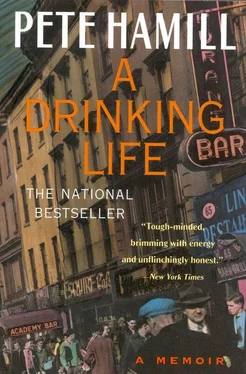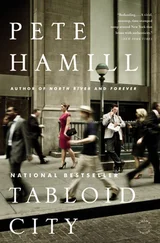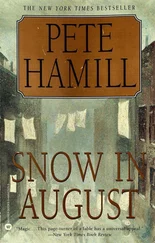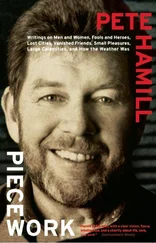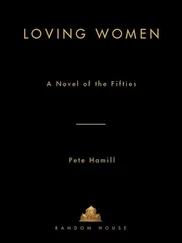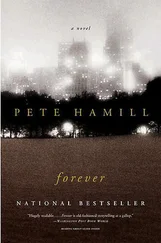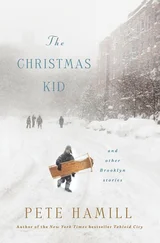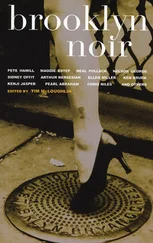On the last weekend of August, Tim and I went to the Greyhound station and waited for the bus that would take us to Mexico City. I had eighty dollars in my pocket and a bag of sandwiches.
Pan, I said to myself. Agua. Cerveza.
THE BUS from Transportes del Norte was climbing slowly, breaching one final ridge as it drove into a gigantic scarlet dawn. Suddenly we could go no higher. And there in the distance, spread out before us in the great valley of Anáhuac, was Mexico City.
I remember the tumult of the bus station, the air drowned with vowels, and the taxi driver staring at the written address and then driving wildly to the house where we would stay, with a family arranged by the school. The address was Melchor Ocampo 288, an apartment house on the corner of Río Tiber. At the door on the fourth floor, an old woman smiled and nodded, speaking no English; her two homely daughters examined us discreetly and led us to the clean, bright rooms. We unpacked, had soup and rolls, trying to be polite. Pan, I said, agua, adding por favor, and ending with gracias. We bowed. We nodded. We smiled too much. Then we went out in search of cerveza.
We found a bar three blocks away, where the Mexicans stood on the rail and so did we. Later we learned that they first thought we were making fun of them; they used the rail because the bar was high and they were short. There was a great pot of shrimp soup in the place, and our fellow drinkers laughed as they explained mezcal and the worm at the bottom of the bottle and tried to describe what pulque does to the human brain. That first night, a soldier came in with his girlfriend and placed himself in the doorway leading to the john, which was an open trench with a steel bar upon which you hoisted yourself if you had more to do than urinate. His girlfriend went in to hoist herself on the steel bar and the soldier held his rifle at the ready, glaring at all of us. Nobody said a word. A rifle is a useful guarantor of good manners. Then the woman was through and the soldier nodded gravely and said Buenas noches and they went into the night.
The bottles of Carta Blanca beer were cold, bien fría, señor, very cold, sir. And from the great jukebox I first heard José Alfredo Jiménez growling his cantina poems and Cuco Sánchez with the harp and the bass guitar singing “La Cama de Piedra”:
De piedra ha de ser la cama,
De piedra la cabecera …
And everyone joining in the mournful line Ay, ay: corazón porque no amas. My heart is broken. Because you don’t love me.
I had grown up in New York and visited Baltimore and Miami and New Orleans. But Mexico City was the most beautiful city I’d ever seen, as we walked in the cool nights along the hard-packed earth of the great wide Paseo de la Reforma. Ash trees climbed high above us. One-peso cabs hugged the curbs. Thick-bodied pigtailed maids met their boyfriends in the shadows and sat on stone benches to listen to the music drifting from the fancy supper clubs. There were elegant office buildings and great Victorian mansions from the days of Porfirio Díaz; cafés on the sidewalks of the Zona Rosa and tiny restaurants where they served octopus in its own ink and shrimp flown in from the Pacific ports. Freshly arrived from the countryside, campesinos in straw hats and white pajamas stared at the great light-bathed statue of the Angel of Independence in the center of the circular glorieta where Río Tiber intersected with the Reforma.
In the crisp mornings, the air thin and clear at 7500 feet above sea level, we walked seven blocks to the school bus, passing shopkeepers washing their sidewalks, and schoolgirls in uniforms hurrying to class. We bought the sports papers, Esto and Ovaciones, and read about how Floyd Patterson, from Tim’s high school in Brooklyn, had knocked out Archie Moore in five rounds to become at twenty-one the youngest heavyweight champion in history. We were the same age as Floyd; wasn’t everything now possible for us too? We also read about the great Mexican fighters, the bantamweight Ratón Macias, who could box and punch and sell a hundred thousand tickets, or the featherweight Pajarito Moreno, who could punch out a Volkswagen with a right hand and was even the hero of his own comic book, or Toluco López, great macho, wonderful fighter, king of the cantinas.
The orange school bus moved up past the monument honoring the 1938 nationalization of the petroleum industry into Las Lomas de Chapultepec, where the rich people had their great mansions behind stone walls topped with broken glass. That year in Mexico City, there were only three million citizens and the air was clear. On those crisp mornings we could see the snow-topped volcanoes Popocatéptl and Ixtac-cíhuatl, the first male, the second a sleeping woman, or so we were told, and so we believed. We came out of the Lomas and turned onto the two-lane Toluca highway, still climbing, with deep gorges falling away on either side, and a vast stone quarry way off to the left; until at the sixteenth kilometer we reached the school.
Mexico City College was a converted country club with the name lettered in deco style over the main archway. I thought, as I stood there on the first day: I’m here, in Mexico. I did it. I walked on the irregularly patterned stone path into the campus and found the administration office in a cluster of plain red sandstone buildings. Tim and I completed our forms for the Veterans Administration, then he went off to the general studies office and I went in search of the art department. The studios were on the top floor of an ivy-covered concrete structure that also housed the theater and the cafeteria, and as I climbed the stairs I picked up the fragrance of oil and terps. For a moment, I flashed on Laura. Maybe she was here. Painting. Teaching.
She wasn’t, of course, but a pretty Mexican woman took my papers, checked them against her own list, and told me that all I needed for my first classes was charcoal and newsprint paper. My first class was in the morning. I was in. With any luck, I would stay for three years, learn the painter’s craft, become the first in my family to earn a degree. Here. In Mexico.
IN THOSE FIRST GLORIOUS MONTHS, I gazed in awe at the work of the Mexican muralists. I looked at the dark, brooding drawings and paintings of the new Mexican artists, led by José Luis Cuevas, who were the enemies of the painted oratory of the muralists. I studied Spanish. Money was always short, the checks from the Veterans Administration slow in arriving. But Carta Blanca was one peso a bottle, the equivalent of eight cents in that time when the peso was a solid 12.50 against the dollar. Bohemia and the dark fermented-looking Dos Equis cost more, but another brand, Don Quijote, was only fifty centavos a bottle, or eighty cents for a case of twenty.
There was drinking everywhere, and Tim and I were part of it. We went drinking in the small hut across the highway from the school, in the cantinas near where we lived, at weekend student parties all over the city. Those parties bound us together. In some ways, it was like the navy. Everyone was far from home, far from Ohio and Illinois, from states with age limits on drinking, far from inspection by friends or family, all using drink to deal with strangeness and shyness and a variety of fears. At MCC, there were two American men for every American woman, and the sense of male contest gave the parties a tension that occasionally resembled hysteria. The rule was BYOB, bring your own bottle, and in the doors came cases of beer, bottles of tequila, mezcal, pulque, rum. These were 1950s parties, young men and women packing the chosen apartment, dancing, as we said, teeth to teeth, to the music of Benny More and Los Panchos, drinking with little care about food, faces swirling, ashtrays overflowing with butts, hot eyes falling upon asses and tits, tits and asses, until the midnight hour had long passed, and finally the last of the women were gone, and the remnants of the bleary male squadron kept drinking on until the beer ran out and you could see the worm in the bottom of the mezcal bottle and it was time to face the gray dawn.
Читать дальше
